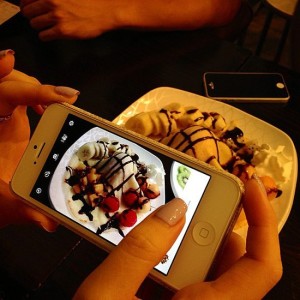Scrolling through my usual Facebook feed this afternoon, I came across an interesting shared post that mentioned how one woman who suffered from daily headaches and migraines felt cured after getting her daith pierced. Personally, I have never experienced a migraine (I do get headaches from time to time) but I have heard many horror stories about them. After reading this woman’s post, I began to wonder if a simple piercing on the inner ear could replace all of the medication that is often prescribed to treat the condition.
I think it is important to mention right off the bat that this is not yet scientifically proven to be true as it is a fairly new finding. But, the daith is part of the inner cartilage of the ear that is considered a pressure point. When pierced, people say it is like acupuncture.
 Tammi Bergman, NP, of ERiver Neurology specializes in headache relief. She often directs her p
Tammi Bergman, NP, of ERiver Neurology specializes in headache relief. She often directs her p
atients to follow routes that would not necessarily mean medications. She says she has not had any patients try it yet, but she believes that the blogs are where breakthroughs like these are found.
Dr. Thomas Cohn is an interventional pain doctor and recently published some information about daith piercings on his own blog, saying, “Some people who have received a daith piercing have coincidentally found improvement with their migraine headaches. The correlation is based on the success for some people with acupuncture in the same region of the daith piercing.”
Owners of tattoo and piercing shops say that they have a lot of people coming in looking for migraine relief and the daith piercing pressure point serves as acupuncture. They recommend the person gets the piercing on the ear that corresponds with the side of his or her head that experiences the majority of the pain.
Acupuncture for migraines has been used for many years. The acupuncturist would insert needles into different pressure points on the side of the body that suffered the most and this would dilate the blood vessels around the body and increase blood flow, relieving pressure. The piercing would be more of a one-time thing, solving the problem immediately if it happens to work on that particular person.
Daith piercings are fairly inexpensive and for those who do not mind getting piercings but suffer from intense migraines this is definitely something to look into. The care for a fresh daith piercing would be very similar to any other ear piercing. However, because it is such a new discovery there isn’t any science backing this information. Studies on this would certainly be beneficial in helping people find proven ways to alleviate their migraine pain without having to resort to medication with side effects. Possible ways to conduct a study would include having willing participants who suffer be split between getting the piercing and not getting it, and see how that affects his or her migraines. Also, researchers would have to be cautious of third variables such as age, gender, and overall health that could alter the findings.
Overall, this is an interesting way to heal this sort of pain and should definitely be the focus of scientific studies in the near future to shine some light on its effects.




 to in negative senses, such as with eating or drinking. The trio polled 316 people between ages 18 and 29 on how of often they watched TV, how much of that was binging (which in this study was defined as two or more episodes of any length) and how regularly they experienced feelings of “loneliness, depression, and self-regulation deficiency.”
to in negative senses, such as with eating or drinking. The trio polled 316 people between ages 18 and 29 on how of often they watched TV, how much of that was binging (which in this study was defined as two or more episodes of any length) and how regularly they experienced feelings of “loneliness, depression, and self-regulation deficiency.”


 to psychopathic.
to psychopathic.









